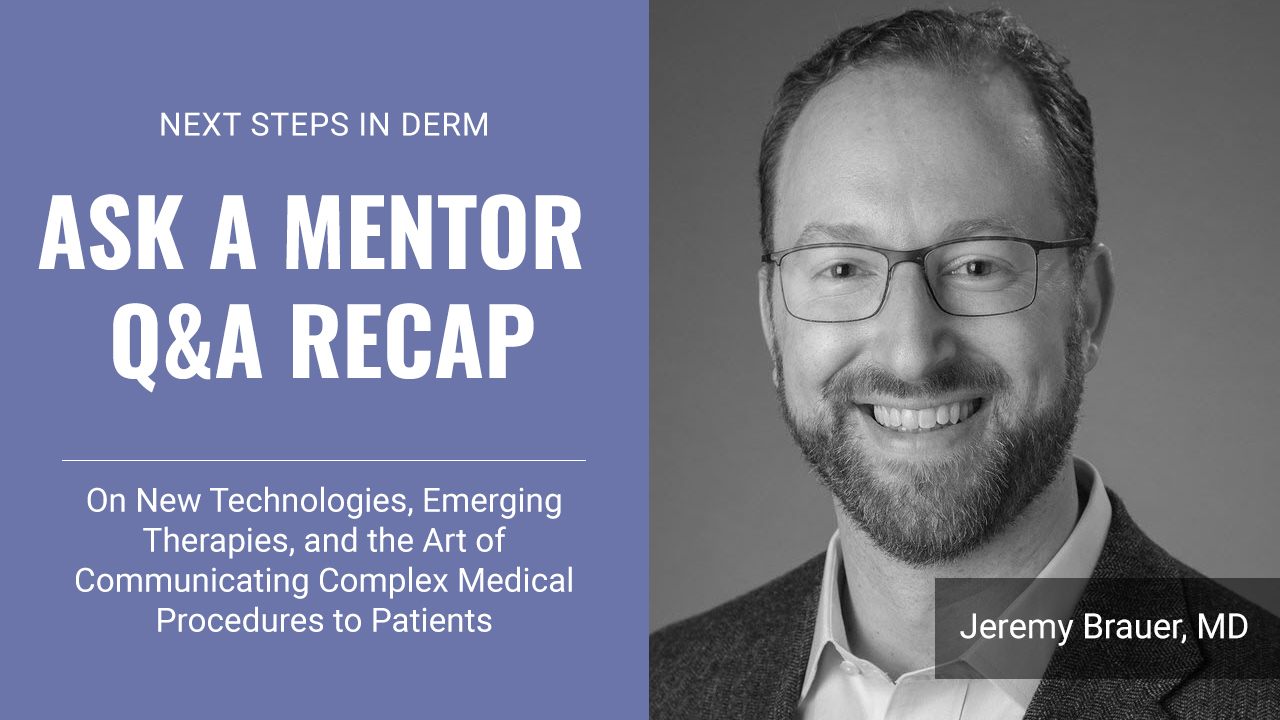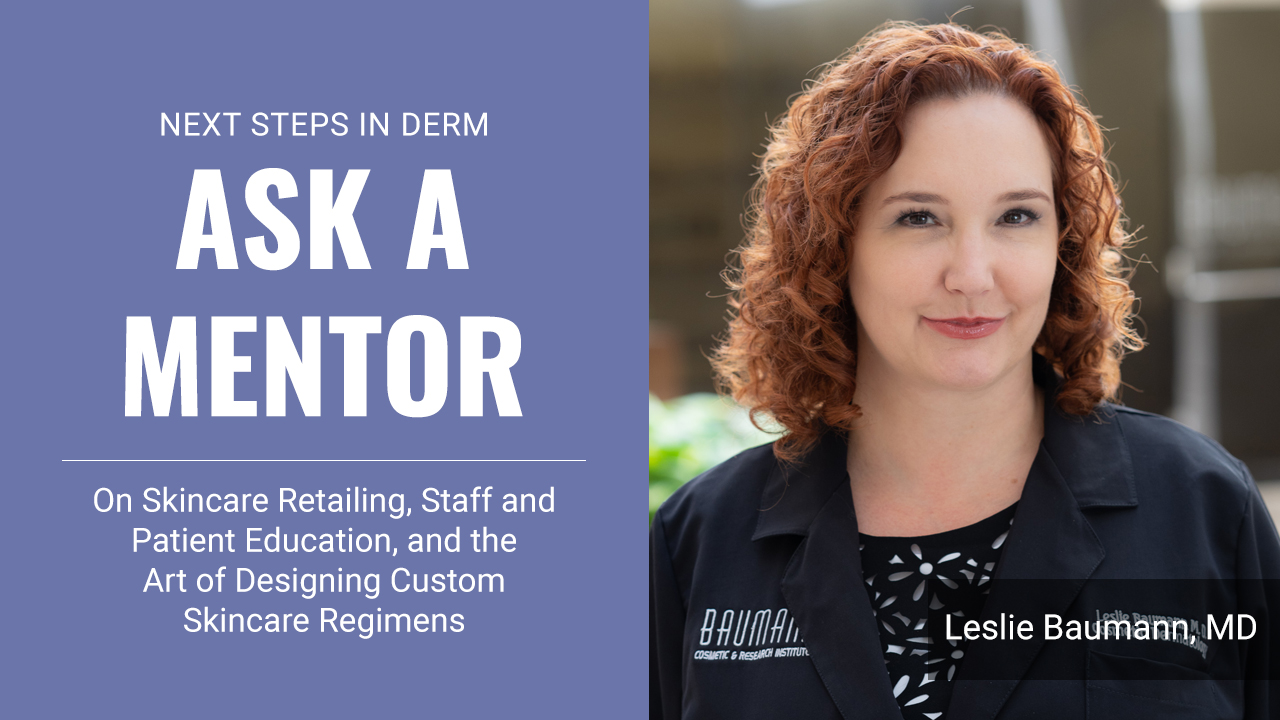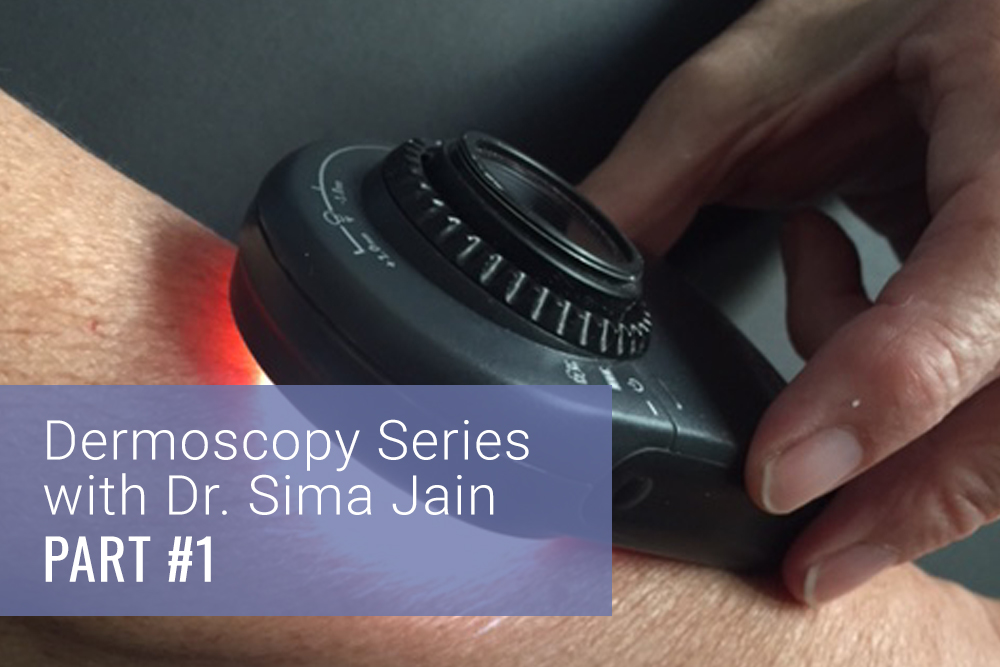Q & A Recap with Dr. Jeremy Brauer
 Our Next Steps readers had the opportunity to ask Dr. Jeremy Brauer questions on new technologies, emerging therapies, and the art of communicating complex medical procedure to patients. See all his insightful answers below.
I’m a recently graduated dermatology resident who just joined a private practice group where the majority of the procedures I perform are cosmetic. What is your advice for …
Our Next Steps readers had the opportunity to ask Dr. Jeremy Brauer questions on new technologies, emerging therapies, and the art of communicating complex medical procedure to patients. See all his insightful answers below.
I’m a recently graduated dermatology resident who just joined a private practice group where the majority of the procedures I perform are cosmetic. What is your advice for …
 Our Next Steps readers had the opportunity to ask Dr. Jeremy Brauer questions on new technologies, emerging therapies, and the art of communicating complex medical procedure to patients. See all his insightful answers below.
I’m a recently graduated dermatology resident who just joined a private practice group where the majority of the procedures I perform are cosmetic. What is your advice for …
Our Next Steps readers had the opportunity to ask Dr. Jeremy Brauer questions on new technologies, emerging therapies, and the art of communicating complex medical procedure to patients. See all his insightful answers below.
I’m a recently graduated dermatology resident who just joined a private practice group where the majority of the procedures I perform are cosmetic. What is your advice for … 








 This week's topic - Papule Removal
This patient presents with a papule on the abdomen that he would like you to remove. He states he's always had it and finds it to be unattractive. Which of the following is true?
A.) similar finding is present in 20% of the general population.
B.) In women there is no change with changing hormones.
C.) On histology demonstrate smooth muscle.
D.) Has …
This week's topic - Papule Removal
This patient presents with a papule on the abdomen that he would like you to remove. He states he's always had it and finds it to be unattractive. Which of the following is true?
A.) similar finding is present in 20% of the general population.
B.) In women there is no change with changing hormones.
C.) On histology demonstrate smooth muscle.
D.) Has …  We are excited to announce our final mentor of 2018: Dr. Leslie Baumann. In this monthly Ask a Mentor segment, we identify an accomplished mentor in the field of Dermatology to answer your questions about career development and their unique areas of expertise.
Do you have questions about cosmeceuticals or skincare regimen design? Would you like to share or discuss any challenges you are exper …
We are excited to announce our final mentor of 2018: Dr. Leslie Baumann. In this monthly Ask a Mentor segment, we identify an accomplished mentor in the field of Dermatology to answer your questions about career development and their unique areas of expertise.
Do you have questions about cosmeceuticals or skincare regimen design? Would you like to share or discuss any challenges you are exper …  Below are the issue highlights and Editor Picks for the December issue of JDD!
JDD CONTINUING EDUCATION SUPPLEMENT: Issues and Considerations for Optimal Outcomes in Acne Management describes the role of retinoids in the management of acne and treatment and prevention strategies for hypertrophic and atrophic acne scarring in all skin types and identifies patient-specific issues impacting effe …
Below are the issue highlights and Editor Picks for the December issue of JDD!
JDD CONTINUING EDUCATION SUPPLEMENT: Issues and Considerations for Optimal Outcomes in Acne Management describes the role of retinoids in the management of acne and treatment and prevention strategies for hypertrophic and atrophic acne scarring in all skin types and identifies patient-specific issues impacting effe …  Introduction
Dermoscopy, also known as epiluminescence microscopy, epiluminoscopy or skin surface microscopy, is a noninvasive technique for examination of skin by using a high quality magnifying lens and powerful lighting system to visualize the skin (Figure 1). Although dermoscopy was initially used for the study of mainly pigmented lesions, in the past several years its utility in non-pigmen …
Introduction
Dermoscopy, also known as epiluminescence microscopy, epiluminoscopy or skin surface microscopy, is a noninvasive technique for examination of skin by using a high quality magnifying lens and powerful lighting system to visualize the skin (Figure 1). Although dermoscopy was initially used for the study of mainly pigmented lesions, in the past several years its utility in non-pigmen …